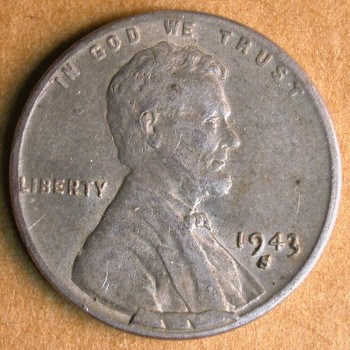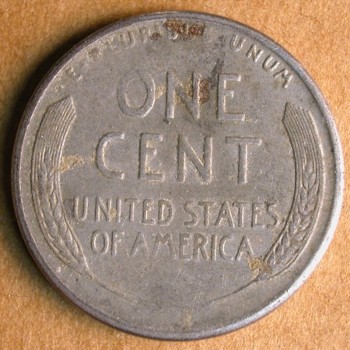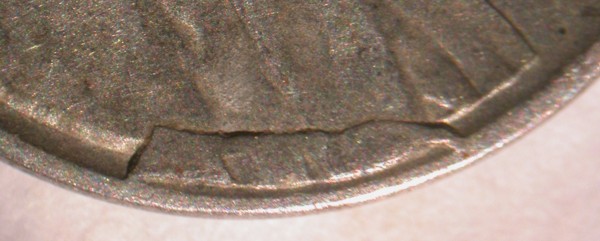Part IV. Die Errors
Die Breaks:
Retained Cuds:
Retained Cuds of Hammer Die
Definition: A retained cud is a fragment that breaks off the edge of the die but is nevertheless held in place. Retained cuds are rarely found in connection with the hammer die. That’s because gravity usually insures that the fragment falls out and is lost. It’s been said that the fragment is held in place by the bolts or clamp that secure the hammer die in its recess within the die assembly. But this cannot be the case because the die neck (where retained cuds form) is free. It is the die shaft and base that are tightened down. There must therefore be another mechanism responsible for retained cuds of the hammer die.
The vast majority of claimed retained cuds of the hammer die are probably invalid. Most of these alleged retained cuds were probably still connected to the rest of the die neck. Slight to moderate displacement is likely due to subsurface deformation beneath a cracked die face.
In cases of severe horizontal displacement, it’s possible that the die fragment breaks free, shifts position, and then fuses to the roof of the void during the next strike.



This cent represents a reasonably good candidate for a retained cud of the hammer die (in this case the obverse die). The island of design at the base of Lincoln’s bust shows a great deal of lateral spread and horizontal offset. The amount of vertical displacement is slight, however. If this is a true retained cud, it’s likely that the die fragment fused to the roof of the void after breaking free and shifting position. If not, then we can assign the movement to subsurface deformation.